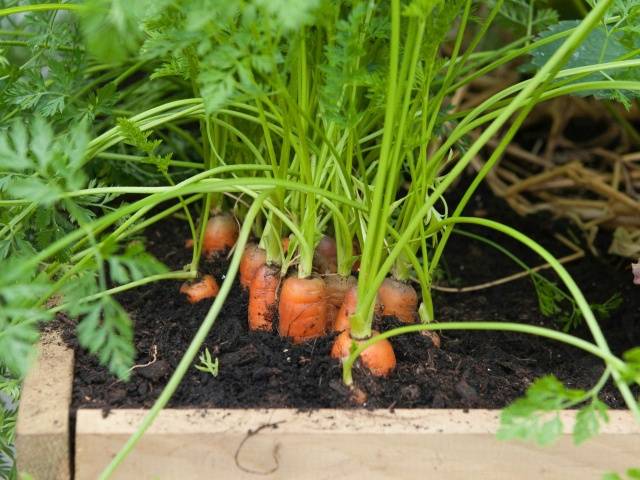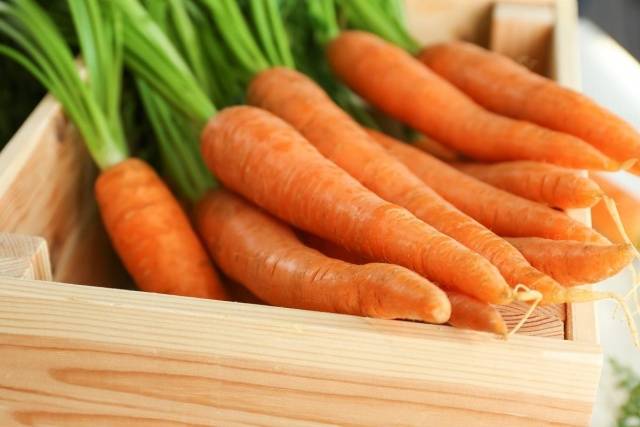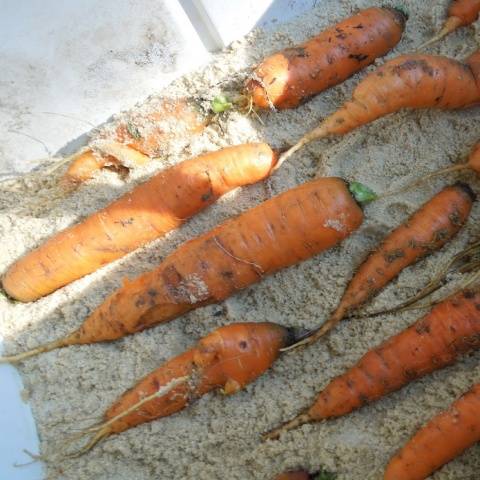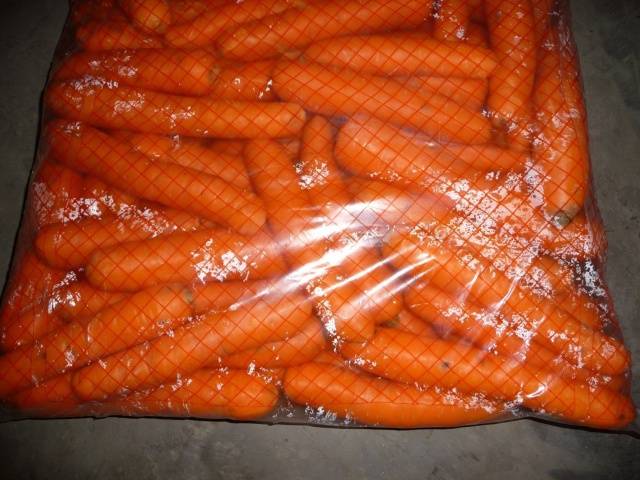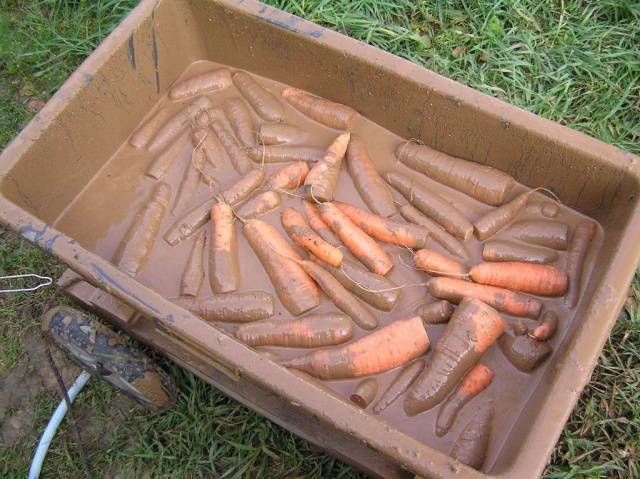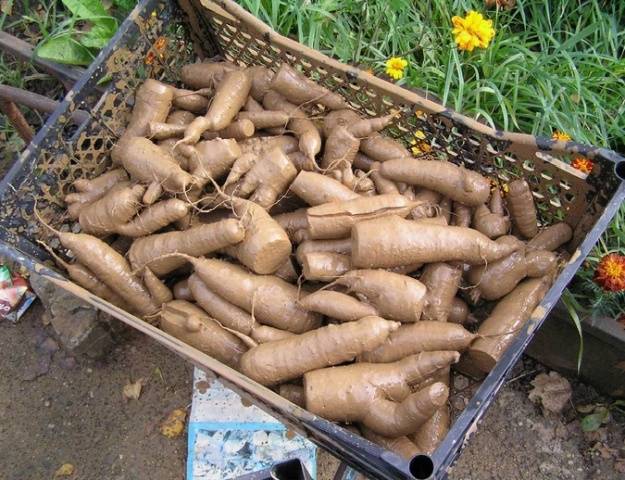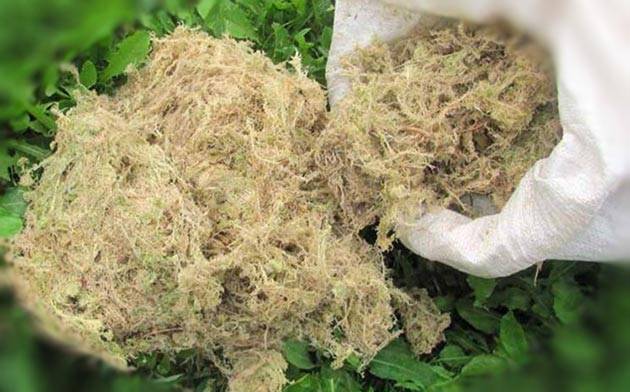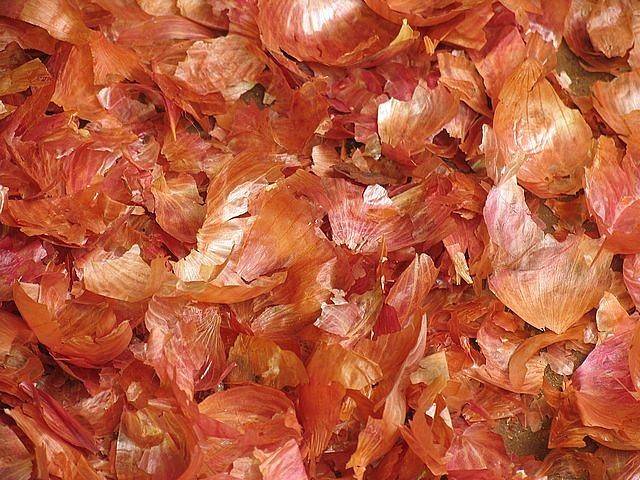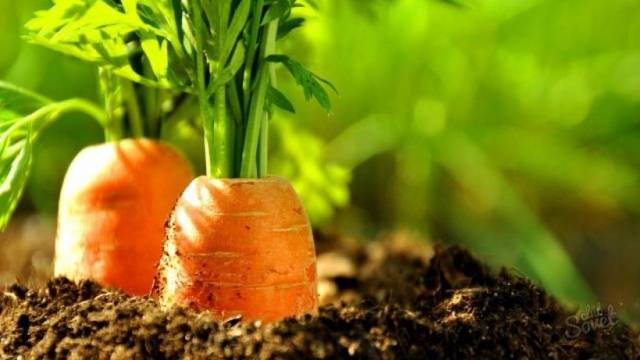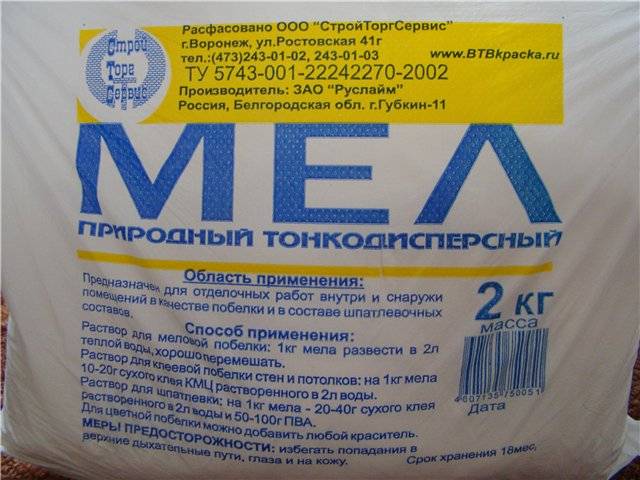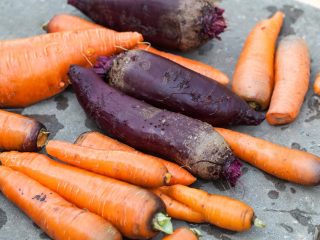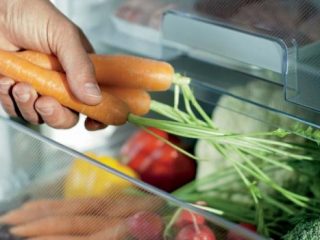Content
Carrots are one of the main types of vegetables that are grown in garden plots. After harvesting, you need to take the necessary measures to ensure its safety. There are several ways how store carrots... First you need to prepare vegetables, which will have a positive effect on the duration of their storage.
Preparing carrots
An important condition for long-term storage of carrots is timely cleaning from the beds. The ripening time of this vegetable depends on the variety and is indicated on the seed package.
If you dig up root crops ahead of time, then they will not have time to accumulate the required amount of sugars, which will negatively affect its taste.
Before harvesting, an important rule is observed: the beds are not watered. Carrots should be trimmed immediately after digging so that the tops do not draw moisture from the roots. First, only the carrot tops are removed, however, in the future, you need to cut off the entire head together with the growth point. Doing this will help you avoid sprouting carrots in winter.
After removing the carrot tops, the vegetables are left to dry for 2 hours in the sun. The crop can be placed under a canopy for ventilation.
Within a week, the roots are stored at a temperature of 10 to 14 ° C. During this time, minor mechanical damage heals, which allows you to eliminate spoiled vegetables.
Choosing a storage location
For the preservation of carrots, a room with a suitable temperature is selected. The best place to store carrots is in the cellar or underground. The room must meet two main storage conditions: not freeze, maintain a constant temperature and remain dry.
The preservation of vegetables is ensured at certain moisture levels. Usually gardeners kept them in the range of 90 to 95%.
Additionally, take into account at what temperature to store carrots. Usually it is 0-1 ° C. When the temperature changes by a few degrees, changes will begin in the root crops. As a result, vegetables wilt, germinate, or become a breeding ground for harmful microorganisms.
Better storage methods
The choice of how to store carrots depends on the volume of the crop and the availability of storage space. The use of sand, sawdust, moss, husks and other materials will help extend the shelf life of vegetables.
Use of sand
For storage, carrots are sent to boxes, which will also require loamy sand and water to fill. It is not recommended to use river sand for these purposes. This method is suitable for gardeners who have a cellar in a house or garage.
Due to the sand, vegetables lose moisture more slowly, and in the boxes a constant temperature is provided for storing carrots and rotting processes do not spread.
After moistening, the sand is poured into the box so that a layer about 5 cm thick is obtained. Then the carrots are placed so that the individual vegetables do not touch each other. Root crops need to be covered with one more layers of sand, after which the next roots are laid out.
Another option for storing carrots is to use buckets and dry sand.
Use of sawdust
One way to store carrots is by using coniferous sawdust. This will require boxes or other containers.Coniferous sawdust contains phytoncides that prevent the spread of harmful bacteria and fungi.
Storing carrots in sawdust organized in the same way as when using sand. The bottom of the box is covered with sawdust, after which the vegetables are laid. Root crops are placed in several layers, covering each of them with sawdust until the container is completely filled.
Storage in plastic bags
This method requires plastic bags or sacks with a capacity of 5-30 kg. Film bags are left open in a cool room. Using the bag allows you to keep the humidity at 97%, which prevents the carrots from withering.
During storage, roots emit carbon dioxide. If the bags are open, then its amount is sufficient to avoid the decay process. With an excess of carbon dioxide, vegetables quickly deteriorate.
If the plastic bags are closed, then holes are first made in them. With high humidity, condensation accumulates on the inner surface of the bag. In this case, you need to scatter quicklime in the room, which absorbs excess moisture. Under these conditions, better storage of carrots is ensured.
Storage in clay
For proper processing of vegetables you will need:
- boxes;
- clay;
- water;
- polyethylene film;
- garlic.
Carrots are stored in one of the following ways:
- Pouring root vegetables... In this case, a bucket is taken, which is half filled with clay and filled with water. After a day, the clay mass is stirred and re-poured with water. For the next 3 days, the clay remains under a layer of water 2 cm thick. It is necessary to use clay, the consistency of which resembles sour cream.
First, wash the root vegetables, then put plastic wrap on the bottom of the boxes and lay out the carrots in one layer. Root crops should not be in contact with each other. Then the box is filled with clay. When it dries, lay out the next layer of vegetables. This fills the box completely. - Dipping carrots... When using this method, the carrots do not need to be washed. First, it is dipped in a garlic mass. To prepare it, you need to skip 1 cup of garlic through a meat grinder. Then the resulting mass is diluted with 2 liters of water. Then the vegetables are dipped in clay, which has the consistency of thick sour cream. In this case, you need to ensure that the clay mass does not drain from the root crops. After this treatment, the carrots are best stored in a room with good air circulation. This can be an attic room, a veranda, an open-air shed. After drying, the vegetables are placed in boxes or boxes.
Storage in moss
Sphagnum moss is a perennial plant that grows in swampy areas. Moss is known for its antibacterial properties and its ability to resist decay.
After collecting sphagnum, the rules for its processing are followed. Moss needs to be sorted out and dried. Then it is placed in plastic bags. This piece can be stored in a cool place for 3 months.
Unwashed vegetables are taken for storage, it is enough to dry them well in the sun. Then the harvest is sent to a cool place for a day.
The carrots are placed in boxes to form several layers, between which the moss is placed. With its help, carbon dioxide is stored in the container. Compared to sand and clay, moss is lightweight and does not weigh down the boxes with the crop.
Storage in pans
It is recommended to store washed carrots in pans. When the vegetables have been trimmed, they are left to dry in the sun.
The washed carrots are placed in an upright position in enamel pans. From above, the crop is covered with a napkin and a lid. Vegetables are kept in a cellar or other cool room. If these conditions are met, the carrots are stored until the next season.
Using husk
Another option for how to properly store carrots is to use onion or garlic husks, which have bactericidal properties. The presence of phytoncides in the husk contributes to the long-term storage of vegetables. For these purposes, only dry material is necessarily used.
Carrots are placed in boxes in several layers. Between each of them is a layer of husk left after peeling onion or garlic. The husk begins to be prepared in advance, however, most of it is obtained after the vegetables are harvested.
Storage in the ground
Root crops can be left in the garden and not harvested. Proper storage of carrots will provide special shelter. In the spring, after the snow cover disappears, the roots are dug up. Root crops are well preserved even at low temperatures and do not lose their taste.
To harvest in the spring, you need to carry out certain preparatory activities in the fall. When storing in a garden bed, the tops of the carrots are cut off. Then the surface of the soil is covered with wet sand. For this, coarse sand is selected.
The bed with carrots is covered with foil. Sawdust, fallen leaves, humus, peat are poured on top, after which they are covered with an additional layer of roofing material or film.
other methods
How to save carrots for the winter, the following methods will help:
- You can create a weak alkaline environment with chalk. Its consumption is 0.2 kg per 10 kg of vegetables. The presence of a layer of chalk prevents the spread of the decay process.
- First, the vegetables are washed and then wrapped in plastic wrap. In this case, the roots should not be in contact with each other. Instead of film, you can use old newspapers or paper.
- A special infusion helps to extend the shelf life of vegetables until spring. To prepare it, you will need 100 g of onion husks or needles, which are poured with 1 liter of water. After 5 days, you can use the infusion by spraying the roots.
Conclusion
The main rule of gardeners is: I keep the harvest in a dry and cool place. There are a variety of ways to store carrots for the winter. The use of sand, sawdust, clay, husks and other materials at hand will help ensure the safety of vegetables. Extends the shelf life of root crops, their correct processing after digging up. Vegetables can be left in the garden to dig up in the spring.
